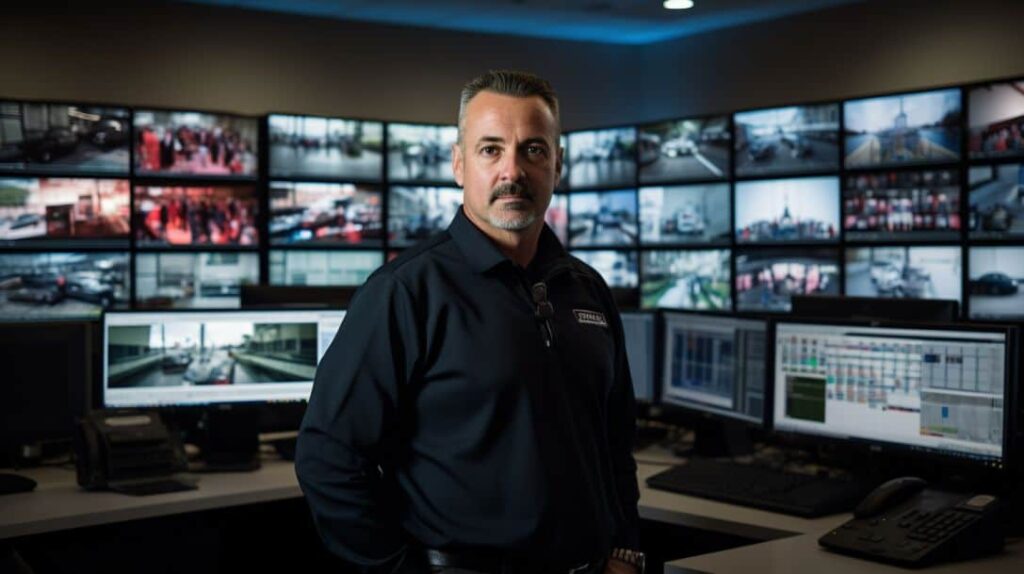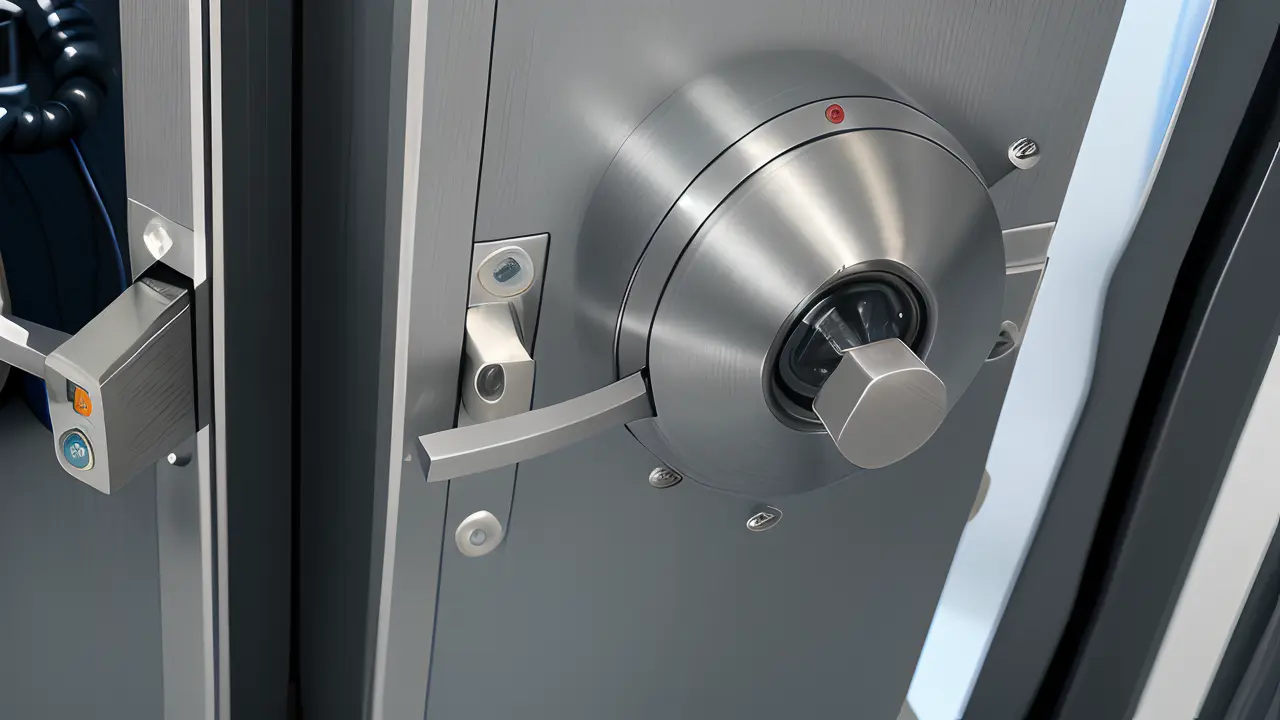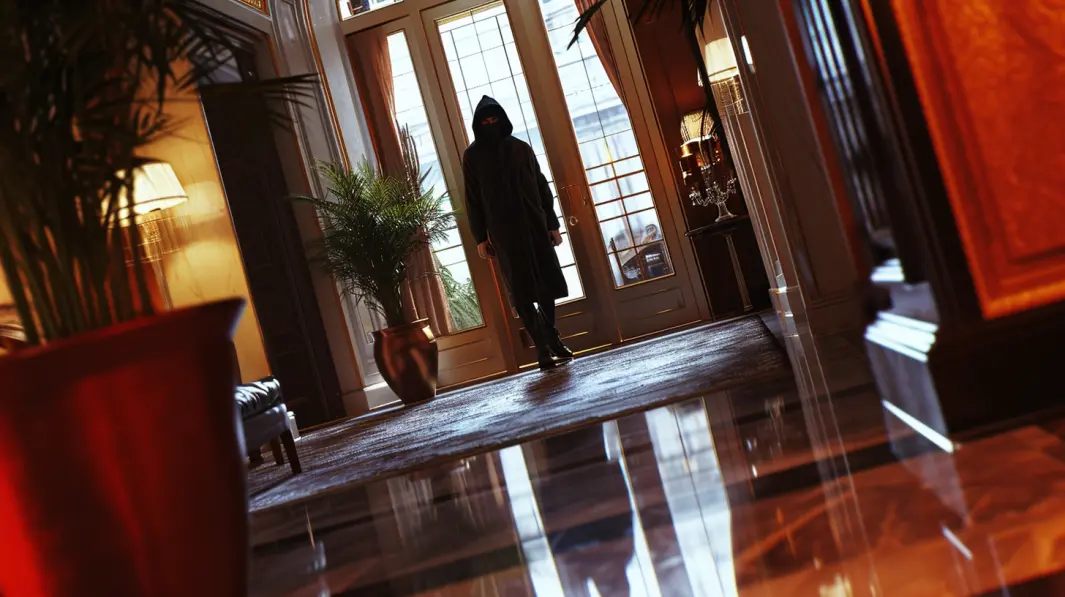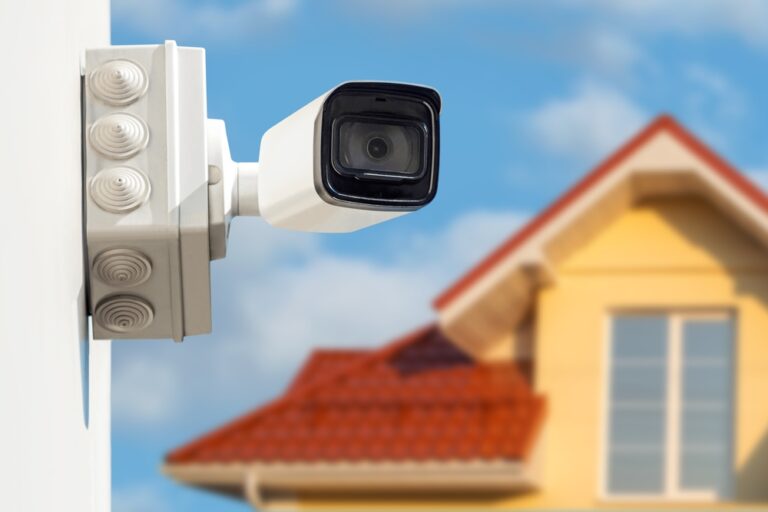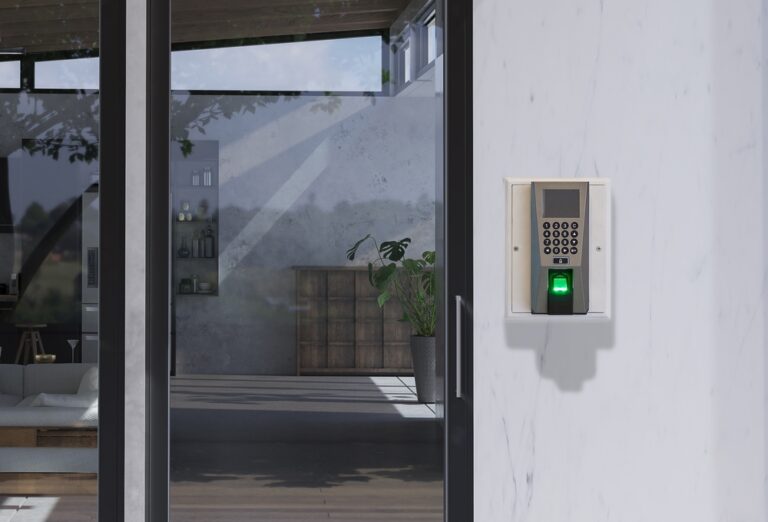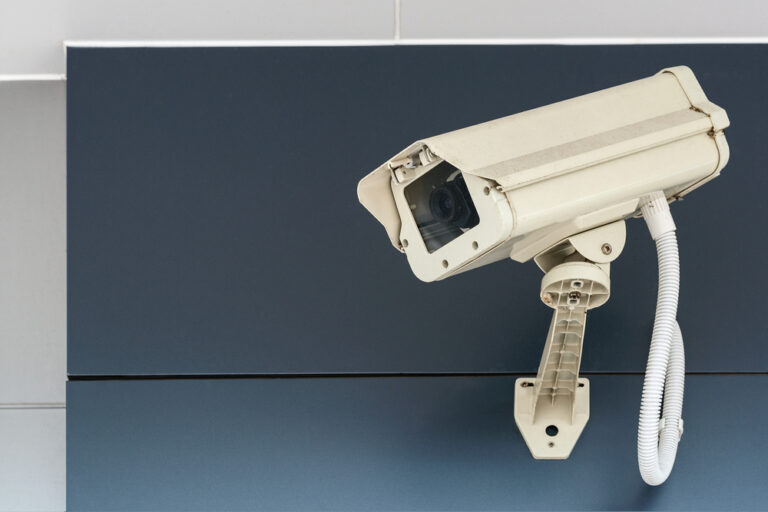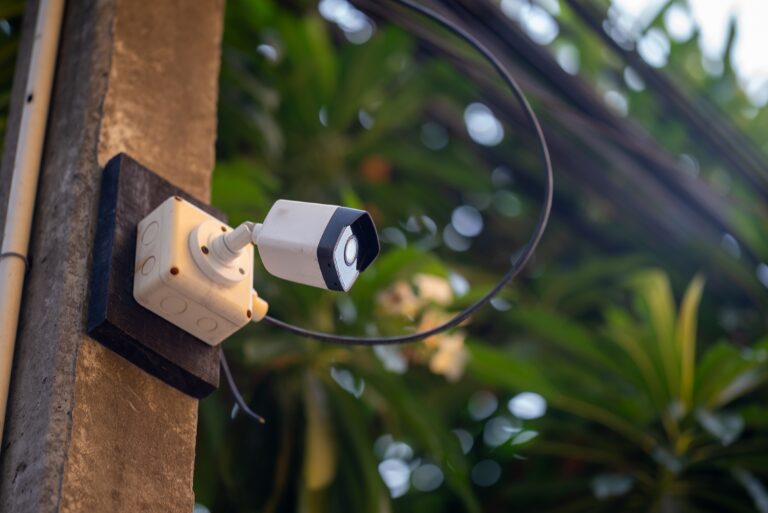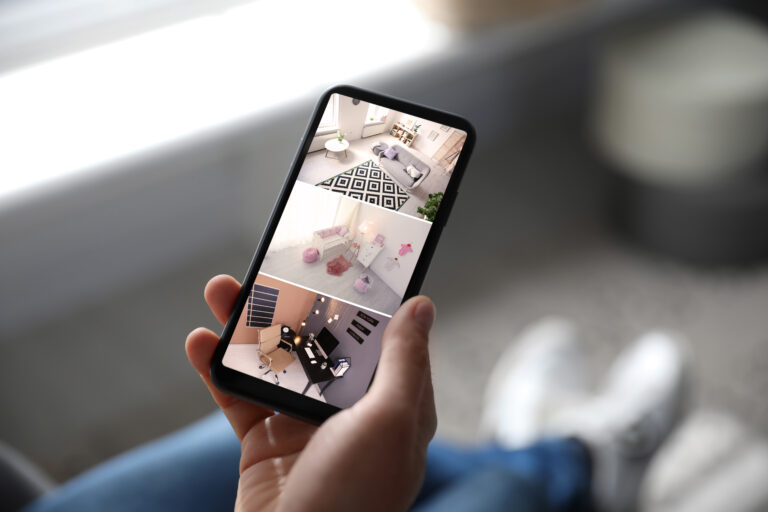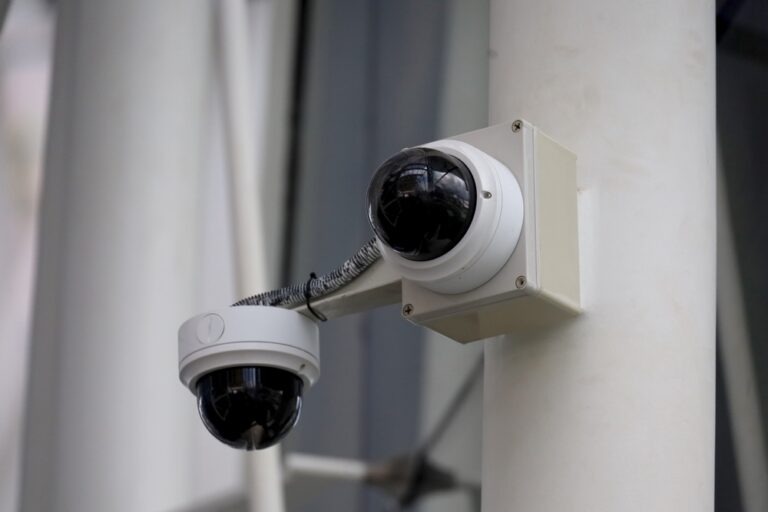- 1) Key Takeaways
- 2) Why Is It Important to Secure Your Security Cameras?
- 3) How Hackers Can Access Your Security Cameras
- 4) Steps to Protect Your Security Cameras
- 5) Shopping Tips for Securing Your Security Cameras
- 6) Secure Your Home Network
- 7) Additional Tips to Keep Your Security Cameras Safe
- 8) What to Do If Your Security Cameras Are Hacked
- 9) Recommended Home Security Cameras
- 10) Conclusion
- 11) FAQs
It’s a scary thought: hackers peeking into your home through your own security cameras. This is more than just a creepy nightmare, it’s a reality that homeowners face in the digital age.
Our user-friendly guide will walk you through easy steps to safeguard your camera systems from unwanted cyber intrusions. Ready for some peace of mind? Let’s dive in!
Key Takeaways
- Regular firmware updates keep your security cameras safe from hackers.
- Strong, unique passwords are a good guard against unwanted access. Use a password manager for help!
- Two-factor authentication adds an extra safety layer to your camera system.
- Keeping cameras and data on separate networks can protect personal information even if one gets hacked.
Why Is It Important to Secure Your Security Cameras?
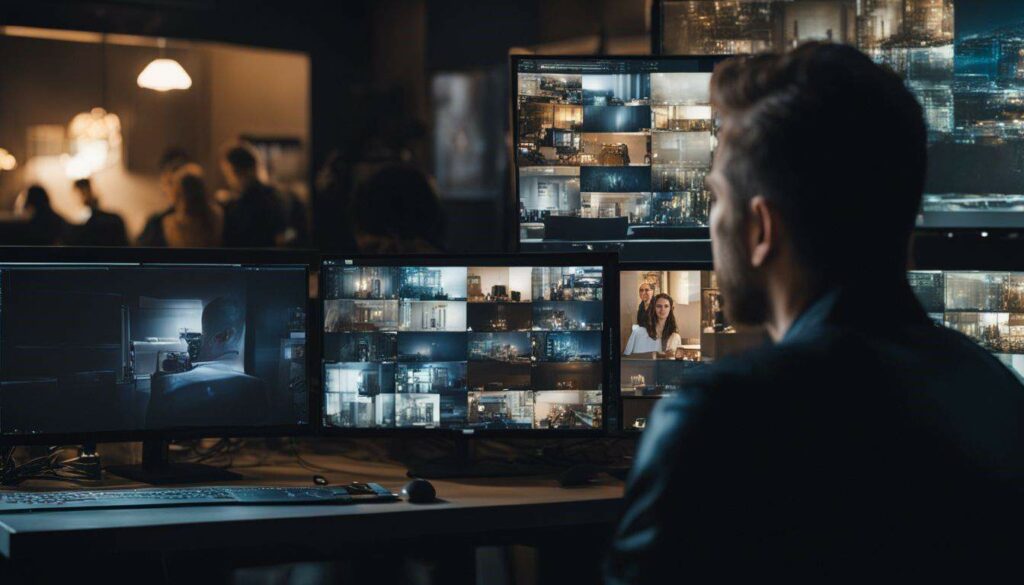
Securing your security cameras plays a critical role in maintaining your privacy and ensuring the safety of your property. Cybercriminals often target unsecured devices to gain unauthorized access to sensitive information or misuse the camera feed for malicious intents, turning what is supposed to be a defense tool into a means of surveillance against you.
Mitigating this risk involves keeping firmware up to date, as outdated software can easily be exploited by hackers. Regular updates from manufacturers that prioritize camera security help address known vulnerabilities.
Additionally, it’s prudent not only to choose where you place your cameras wisely but also to consider secure methods for securing your security cameras beyond port forwarding which, despite its simplicity, proves a common exploit for cyber attackers.
Therefore, protecting camera systems from hackers goes beyond mere password protection – it encompasses an array of preventive measures ranging from regular maintenance checks to conscious placement decisions that significantly reduce the potential threat of breaching attempts.
How Hackers Can Access Your Security Cameras
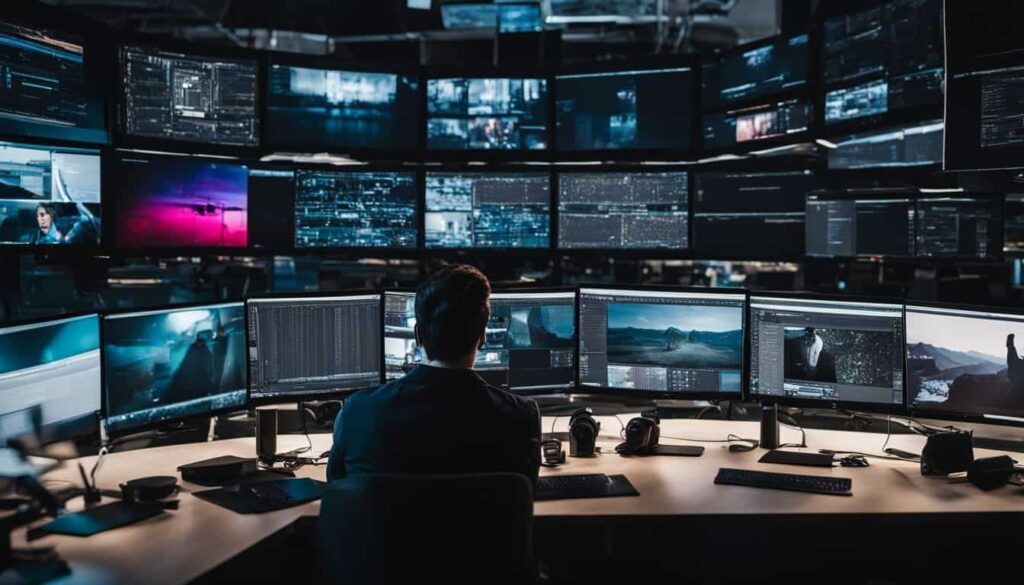
Hackers can infiltrate your security cameras through a variety of methods, such as exploiting outdated firmware, using weak passwords to access systems, and bypassing absent two-factor authentication.
Outdated firmware
Outdated firmware is a common gateway for hackers to infiltrate your security cameras. Hackers recognize and exploit known vulnerabilities in older versions of camera software. Therefore, not updating your firmware regularly can leave your camera system susceptible to hacking attempts.
Manufacturers constantly work on improving their products’ security. They dispatch frequent firmware updates as a preventative measure against newly discovered threats or bugs. Ensuring you have the latest updates provides an essential layer of protection by closing off any possible access points that hackers might exploit.
Weak passwords
Weak passwords pose a significant risk to the security of your surveillance system. Hackers can easily decrypt them, gaining unauthorized access to your cameras and potentially invading your privacy.
A hacker’s task becomes simpler if you’re using default passwords or common phrases that are easy to guess. To minimize this risk, it’s crucial to establish strong, unique passwords for each of your cameras and any associated accounts or apps.
Opting for combinations of uppercase letters, lowercase letters, numbers and special symbols can enhance password strength substantially. Using a trusted password manager helps in securely storing these complex codes while offering extra convenience when you need them.
Lack of two-factor authentication
Two-factor authentication adds an extra layer of security to your security cameras. Without it, hackers can easily bypass a single password system. As one element of the two-step verification process, you will typically enter your password.
Then you’ll need to provide another form of identification like a fingerprint or a unique code sent to your mobile device. This gets tricky for hackers because even if they crack your password, they won’t get far without the second step’s information that only you should have access to.
By not considering this vital defense mechanism in securing their surveillance systems, many users unknowingly make themselves targets for hacking attempts.
Steps to Protect Your Security Cameras

Regular firmware updates, strong unique passwords managed by a reliable password manager, and setting up two-factor authentication are key steps to significantly bolster the security of your cameras.
Dive in deeper to learn how these steps can be easily incorporated into your routine for optimal camera protection.
Keep firmware up to date
Updating your camera’s firmware regularly is a powerful way to safeguard your home from potential hackers. This preventive measure ensures you have the latest security enhancements and vulnerability fixes, reducing the risk of unauthorized access.
Many reputable manufacturers prioritize camera security by frequently releasing patches that fix known bugs or weak spots in their system, which can help fortify your surveillance privacy.
Automatic updates are often an overlooked feature when buying DIY security devices; however, they play a critical role in keeping hackers away from your cameras. These automatic updates do more than just improve functionality; they act as an active defense against evolving cyber threats.
By enabling this feature, you’re helping ensure the ongoing protection of your video surveillance system and minimizing the risk of unanticipated breaches.
Use strong and unique passwords
Creating robust and unique passwords provides a critical line of defense against hackers trying to infiltrate your security cameras. Don’t use simple or commonly used phrases; they are easy targets for cybercriminals.
Instead, make a point to complete a random sequence of numbers, symbols, and both lower and upper-case letters for your password. A powerful password should ideally have at least 12 characters.
Cybersecurity professionals suggest changing your passwords regularly as another important step in securing systems from unauthorized access. Password managers can offer assistance by generating complex combinations that are tough to crack while also securely storing them so you don’t need to memorize each one manually.
Protecting your security camera boils down not just to securing the network but equally to setting up strong passwords that block unwanted intruders!
Use a password manager
Utilizing a password manager significantly boosts the security of your surveillance camera. This handy tool creates, stores, and manages strong unique passwords for every account you have – doing away with easy-to-guess or reused passwords.
With encryption protecting your information, it shields your accounts from hacking attempts and unauthorized access. Password managers take care not only of security but also convenience; you no longer need to manage multiple complex codes on your own.
However, just like any aspect of cybersecurity for surveillance cameras, ensure that the password manager itself is secured by employing two-factor authentication and other safety features whenever possible.
Set up two-factor authentication
Setting up two-factor authentication adds an extra layer of protection to your security camera system. It’s a process that verifies your identity through two separate components – something you know (like a password) and something you have (such as your phone).
A hacker might crack your password, but without access to the second factor – usually a code sent to your phone or email – they can’t gain control over your cameras. This cybersecurity method significantly reduces the risk of unauthorized access to surveillance footage and is now a must-have feature in safeguarding security cameras from cyber threats.
Shopping Tips for Securing Your Security Cameras
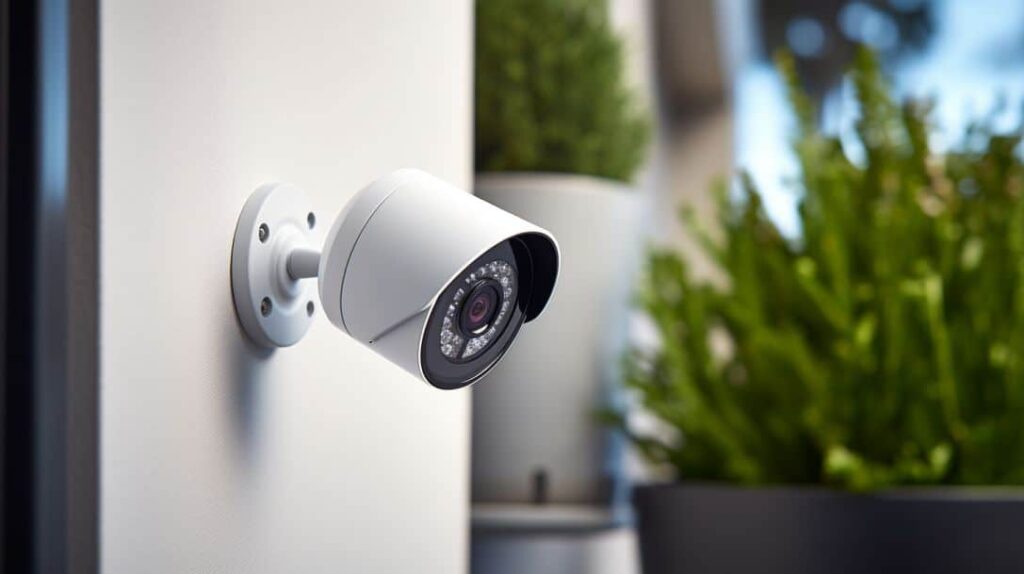
When looking for security cameras, favor reputable brands known for their superior cybersecurity features. Consider investing in professionally monitored systems that can offer an extra layer of protection against potential breaches and hacking attempts.
Choose reputable brands
Buying security cameras from renowned and trusted manufacturers can significantly bolster your device’s defense against hackers. These brands give paramount importance to customer privacy and safety, continuously updating their firmware to fix security loopholes.
They incorporate features like two-factor authentication, advanced encryption methods, and automatic updates. Don’t fall for cheap deals that compromise on cybersecurity measures – choose reputable brands that prioritize protecting your data over everything else.
The investment in such reliable brands leads to robust guarding of surveillance privacy and strengthens the protection of your surveillance system overall.
Invest in professionally monitored systems
Professionally monitored systems offer an extra layer of security for your cameras. With real-time monitoring, these services add around-the-clock surveillance and prompt responses to suspicious activities.
More often than not, they have specialized software that is continually updated to spot potential threats and thwart hacking attempts quickly. They work diligently on the back end, addressing vulnerabilities before hackers can exploit them which makes them a worthwhile investment in securing your cameras better.
These systems may come with additional costs but consider it an investment towards greater peace of mind knowing experts watch over your camera network tirelessly.
Secure Your Home Network

Securing your home network is a crucial step in protecting your security cameras from hackers. Consider keeping your cameras and data on separate networks for additional safety. Don’t forget to regularly update the security measures of your home network, as out-of-date systems are more vulnerable to hacking attempts.
Keep cameras and data on separate networks
Splitting your camera and data networks is a smart strategy for enhancing home security. Hackers who breach one network will not have access to the other, protecting sensitive personal information stored on separate devices.
To implement this, you first need two separate internet connections, each running its own router and Wi-Fi network. Connect your cameras exclusively to one network while linking all other devices like computers or smartphones to the second network.
This setup minimizes the risk of a successful hacking attempt spreading across multiple devices in your home. By employing these methods, you can significantly lower the vulnerability of both your surveillance cameras and personal data.
Update network security regularly
Updating your network security regularly is a vital part of keeping your surveillance cameras safe. It’s not enough to set it and forget it. Hackers are always on the hunt for vulnerabilities they can exploit.
That’s why regular updates are critical – they address any flaws or gaps in the system that hackers might use to gain access. Most devices offer automatic updates as an option, which eliminates the risk of forgetting to do it manually.
Automated updates work constantly to protect your cameras from unwanted intrusions, offering you peace of mind and making sure that prying eyes stay away from your home’s video feeds.
Another important aspect of network security involves using strong passwords on all connected devices, including routers and WiFi networks. Always customize factory-set default passwords with unique combinations, making them tougher for potential hackers to crack.
Two-factor authentication adds an extra layer of protection against unauthorized access attempts; if a hacker manages to decipher your password somehow, they’d still need another piece of information (like code sent via text) before gaining full control.
Moreover, consider separating camera data onto different networks – this hampers cybercriminals’ efforts by adding more barriers between them and valuable information stored on your other devices.
Keeping firmware up-to-date is essential too! Manufacturers often release firmware updates after discovering security vulnerabilities within their products: these patches resolve identified weaknesses thus helping safeguard against hacking attempts.
Investing in well-known brands that prioritize customer safety can also contribute significantly towards maintaining secure surveillance systems at home.
Finally yet importantly don’t ignore built-in camera settings designed explicitly for enhancing user privacy: toggling a few switches here & there may make all the difference needed to prevent a hack attempt early stage itself! Therefore keep exploring various options available inside the device menu until feel confident about the cameras’ overall protection level achieved through optimization usage of already existent tools measures hand i.e., enable whichever features find useful according to needs requirements plus remain vigilant time monitor activities output live stream feed continuously order detect any signs unusual behavior happening thereby notify relevant authority case suspicious incident does indeed occur.
Additional Tips to Keep Your Security Cameras Safe
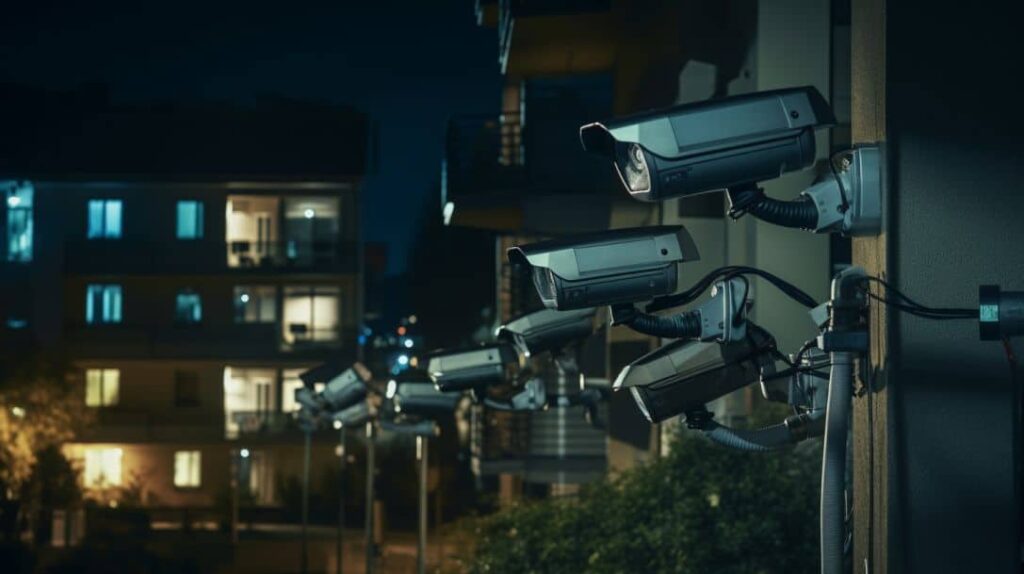
To further enhance the safety of your security cameras, consider using different networks for live streaming, enable any built-in security features in your devices, and practice caution when sharing live streams to avoid potential breaches.
Use different networks for live-streaming
Diversifying networks for live streaming can significantly enhance the security of your surveillance cameras. By placing your live-streaming devices on a separate network from your main system, you reduce the risk of cyber threats penetrating your primary home network.
This strategy helps to protect important data stored in other devices connected to the network from possible hacking attempts while you’re streaming or sharing footage online. Encryption protocols might offer a decent level of protection, but using different networks creates an additional layer of safeguarding against potential breaches.
It’s like having two doors between hackers and valuable personal information instead of one – they would have to unlock multiple barriers before gaining access which makes things exponentially tougher for them! Be wise about what connects where: keep regular gadgets on one network and leave another solely for camera streams; it’s a simple step that can go a long way in keeping prying eyes off your private life.
Enable built-in security features
Taking advantage of built-in security features is an effective method to ensure the safety of your surveillance cameras. Many modern cameras come with a variety of security features designed specifically to defend against hacking attempts.
These may include options for data encryption, automatic firmware updates, and two-factor authentication.
Make it a habit to thoroughly review the settings on your camera upon installation and periodically throughout its use. This way, you can activate any new security upgrades that have been released by the manufacturer in response to emerging cyber threats.
Regularly enabling these enhanced protections can significantly reduce vulnerabilities and strengthen your camera’s defense system.
Be cautious when sharing livestreams
Sharing livestream footage from your security cameras involves risks, particularly if it falls into the wrong hands. Hackers can exploit this information for nefarious purposes or to gain unauthorized access to your network.
Always make sure to use different networks for streaming and data storage, which significantly limits potential exposure points and makes it harder for hackers to penetrate your security system.
Keep an eye on who you share your livestreams with; only trusted individuals should have access. Likewise, never publicly post links or passwords to your streams online as they can be easily discovered by unwanted prying eyes.
What to Do If Your Security Cameras Are Hacked
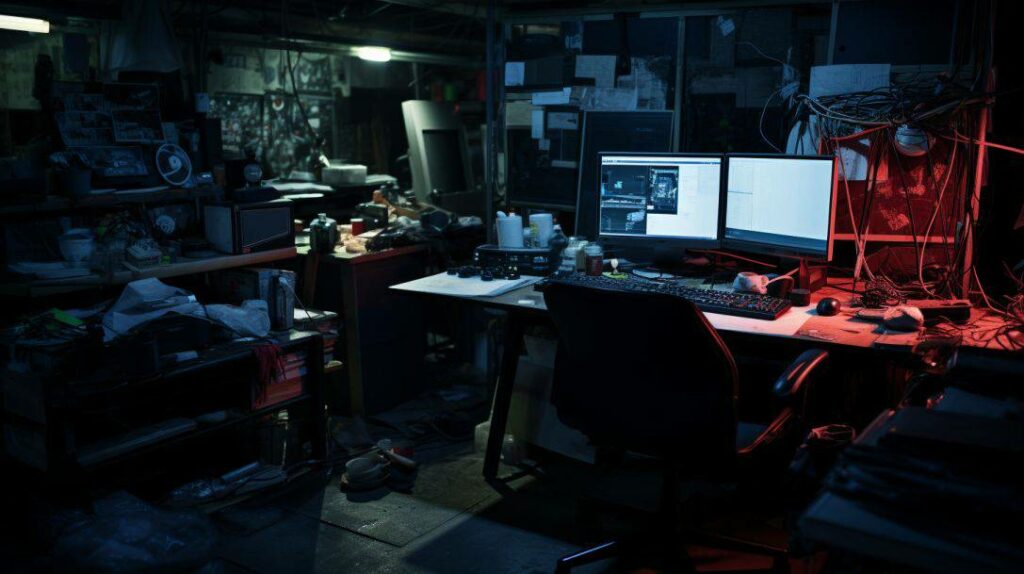
In the unfortunate event, that your security cameras are hacked, immediate steps to mitigate damage include disconnecting from the internet, changing all passwords associated with the system, and reporting the breach to both manufacturer and authorities; for more in-depth discussion on these steps as well as further assistance, continue reading.
Disconnect from the internet
Unplugging your security camera from the internet is a quick and effective strategy to halt a hacking attempt. It provides immediate isolation, preventing further unauthorized access or transmission of data.
To do this, disconnect the Ethernet cable that connects your camera to your router if it’s wired. For wireless cameras, turn off its Wi-Fi option either directly on the device or through its app settings.
Afterward, it’s critical to change all passwords associated with your surveillance system and report suspicious activities to both authorities and manufacturers.
Change all passwords
Swift action is needed once you suspect your security cameras have been hacked. Start by changing all passwords associated with the compromised device right away. This includes the camera’s password itself and the passwords for linked apps or services.
Always opt for a strong and unique combination of characters in your new passwords. Avoid using personal information, repeated sequences, or easy-to-guess words. Using a secure password manager can also help keep track of these new credentials effectively while enhancing protection against future hacking attempts.
It’s critical to ensure every digital gateway related to your security system is reset with fresh encrypted data to eliminate further unauthorized access by hackers.
Contact the manufacturer and authorities
Act swiftly and report the hacking incident to your security camera’s manufacturer. They will guide you on further steps to secure your device from future unauthorized access. The company may need details of the breach for its cybersecurity team to investigate properly.
Similarly, inform local law enforcement about the breach. Digital crimes are serious offenses and must be reported promptly. Sharing information with authorities not only helps with your case but also aids in curbing cybercrime on a wider scale.
This crucial step creates safer digital platforms for all users in the long run.
Recommended Home Security Cameras
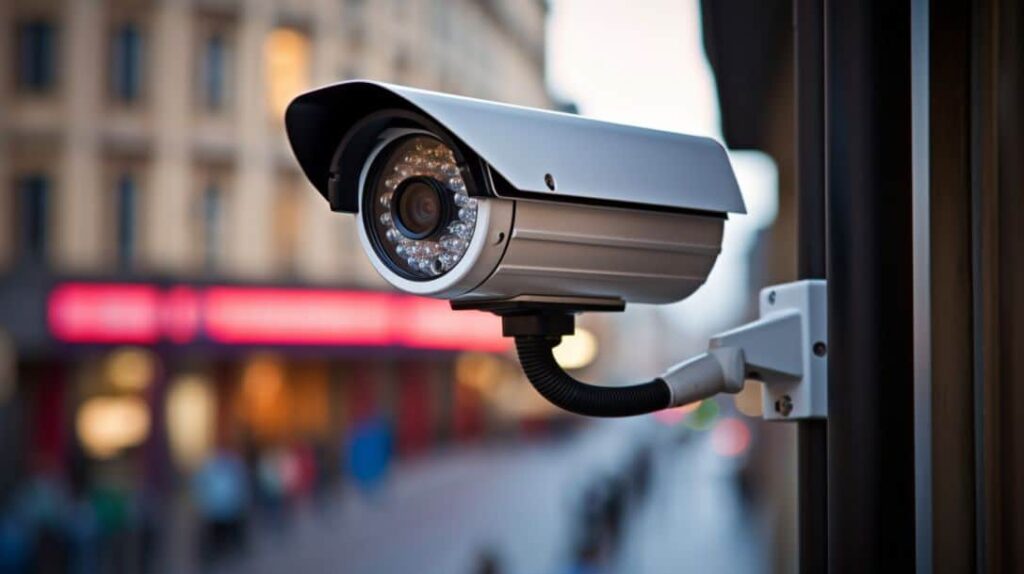
Look into the features to consider when selecting a home security camera, and learn how to properly set them up for optimal cybersecurity.
Features to look for
High-definition video quality is a vital feature to consider when purchasing a security camera. Cameras with clear, sharp footage allow you to identify intruders easily. Look for cameras that offer night vision and motion detection capabilities as these can provide extra protection during the night or when you’re away from home.
A field of view wide enough to cover the areas you want to monitor is also essential. You should prefer cameras with secure encryption methods for account information and livestreams, actively protecting your data from hackers.
Automatic firmware updates are another crucial feature since keeping your camera’s software up-to-date helps guard against vulnerabilities exploited by hackers. Ensure the selected camera has built-in privacy features like masking zones to avoid filming private spaces within your house unintentionally.
Tips for setting up
Setting up your security camera involves a series of important steps that ensure its function and security.
- First things first, always update the camera’s firmware. This is because manufacturers consistently release patches for vulnerabilities.
- When selecting a password, make it strong and unique, using a mix of letters, numbers, and symbols. A password manager can securely keep track of these for all your devices.
- Enable two-factor authentication (if available), adding an extra layer of protection to the login process.
- Pay attention to where you place your cameras – pointing them towards entryways is safer than covering private areas within your house.
- Use encryption for account information and livestreams with cameras that offer built-in security features.
- Avoid port forwarding which is simply less secure and attracts hackers.
- Regularly monitor the activity on your cameras, being cautious about any signs that might signal a hacking attempt.
- Lastly, always disconnect the camera from its power source if you suspect it has been compromised while you take further action.
Conclusion
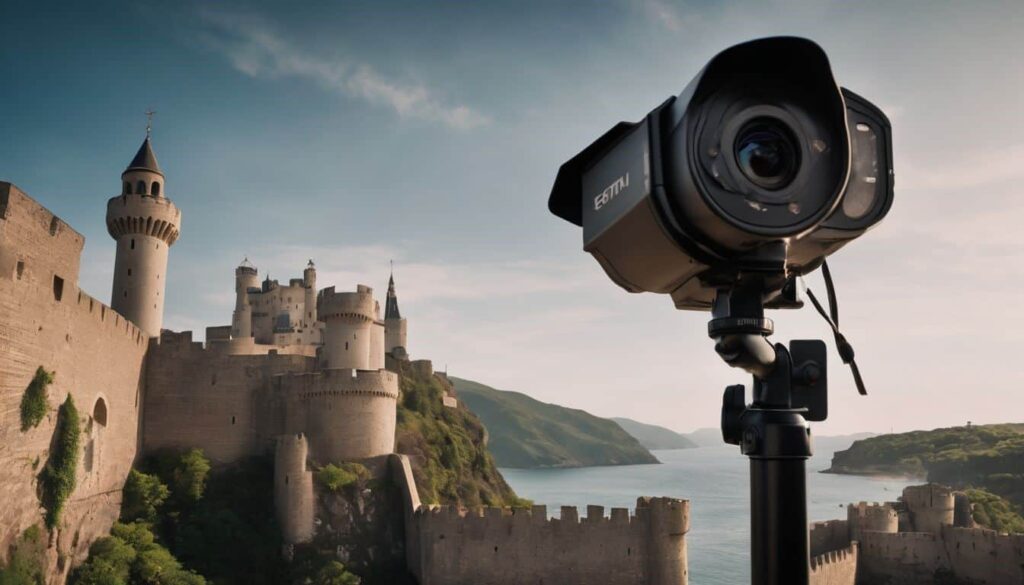
Always stay vigilant and proactive to shield your security cameras from potential hacking risks. Embrace the best practices for maintaining regular firmware updates, setting tough passwords, and using a secure network.
Remember, the safety of your home relies heavily on how well you sustain the security of your surveillance system. Don’t wait until a breach occurs; start securing your devices today to create an impregnable fortress around your home!
FAQs
How often should I update my camera firmware?
Firmware updates contain important security patches that fix vulnerabilities in your camera’s software. It’s recommended to enable automatic updates if available, so you receive these fixes as soon as the manufacturer releases them. Otherwise, check for new firmware monthly and update manually to keep your system protected.
What makes a strong password?
Strong passwords are vital for securing your cameras. Aim for at least 12 characters, mixing uppercase and lowercase letters with numbers and symbols. Avoid dictionary words, personal info, or repeated sequences which are easier to crack. Using a password manager helps create and store complex codes securely.
Should I use a separate Wi-Fi network just for security cameras?
Having your cameras on their own network enhances security. If a hacker breaches the camera network, your other devices and data on the primary home network remain protected. This setup requires two routers – one for cameras, the other for everything else.
How do I know if my security camera has been hacked?
Signs of a camera breach include laggy footage, trouble accessing your system, settings being altered without your input, or abnormal camera activity. Disconnect it from power immediately if a hack seems likely while you reset passwords and contact the manufacturer.
What information should I have ready when reporting a hacked camera?
When reporting to the manufacturer and authorities, provide details like the camera model, when/how you noticed the breach, and steps taken so far. List all observed suspicious activities. This comprehensive information aids investigations and securing your device.
